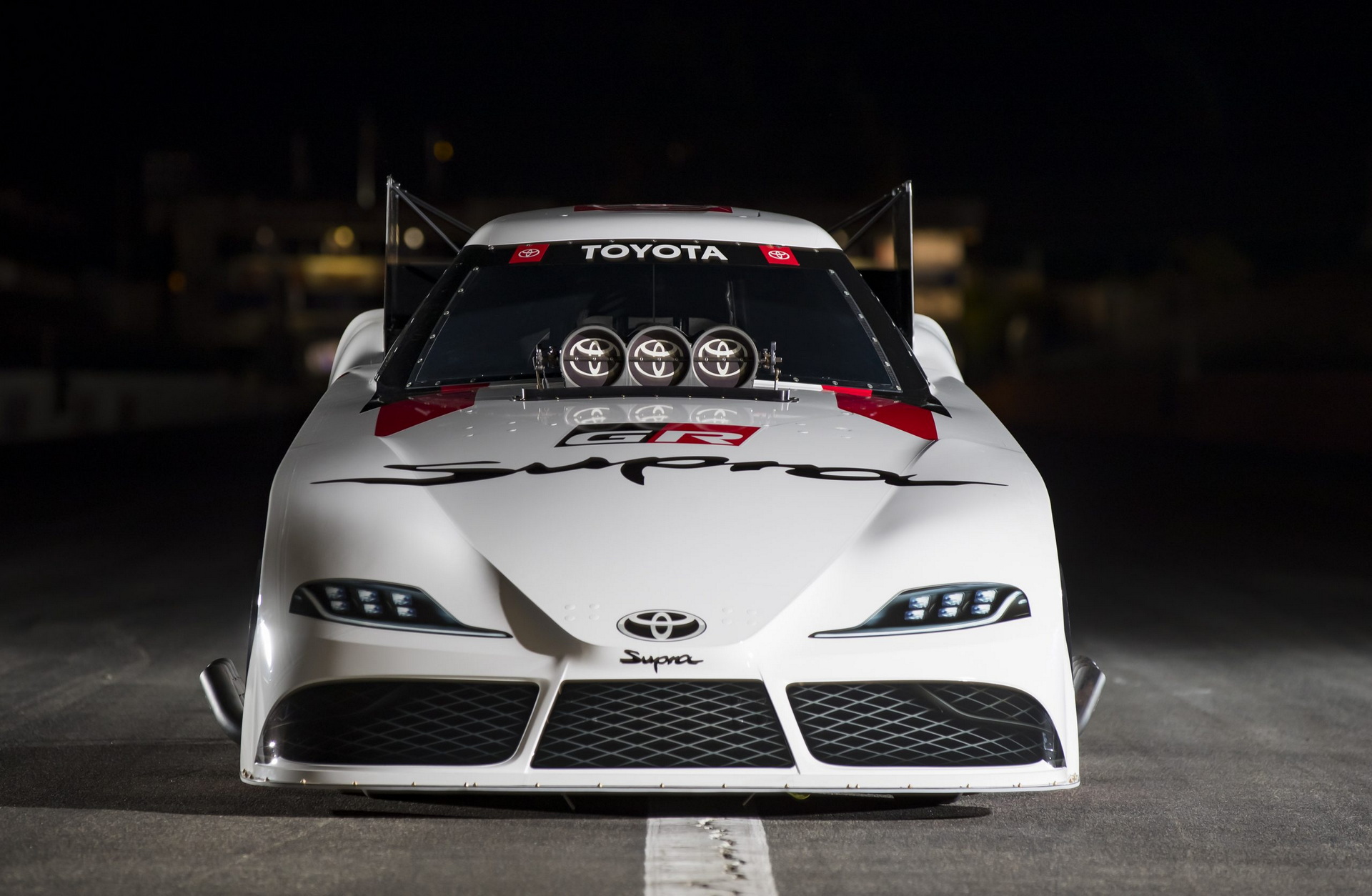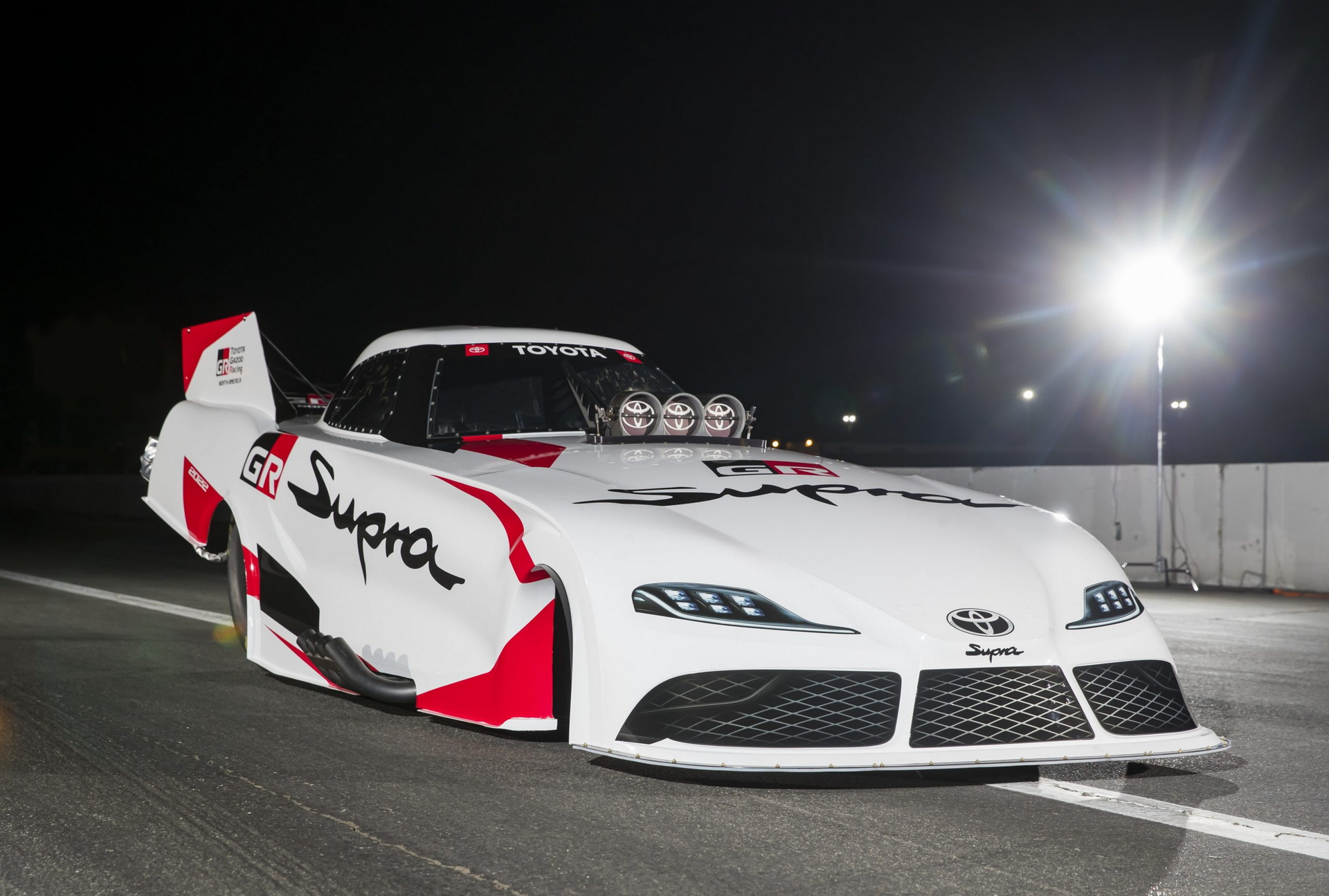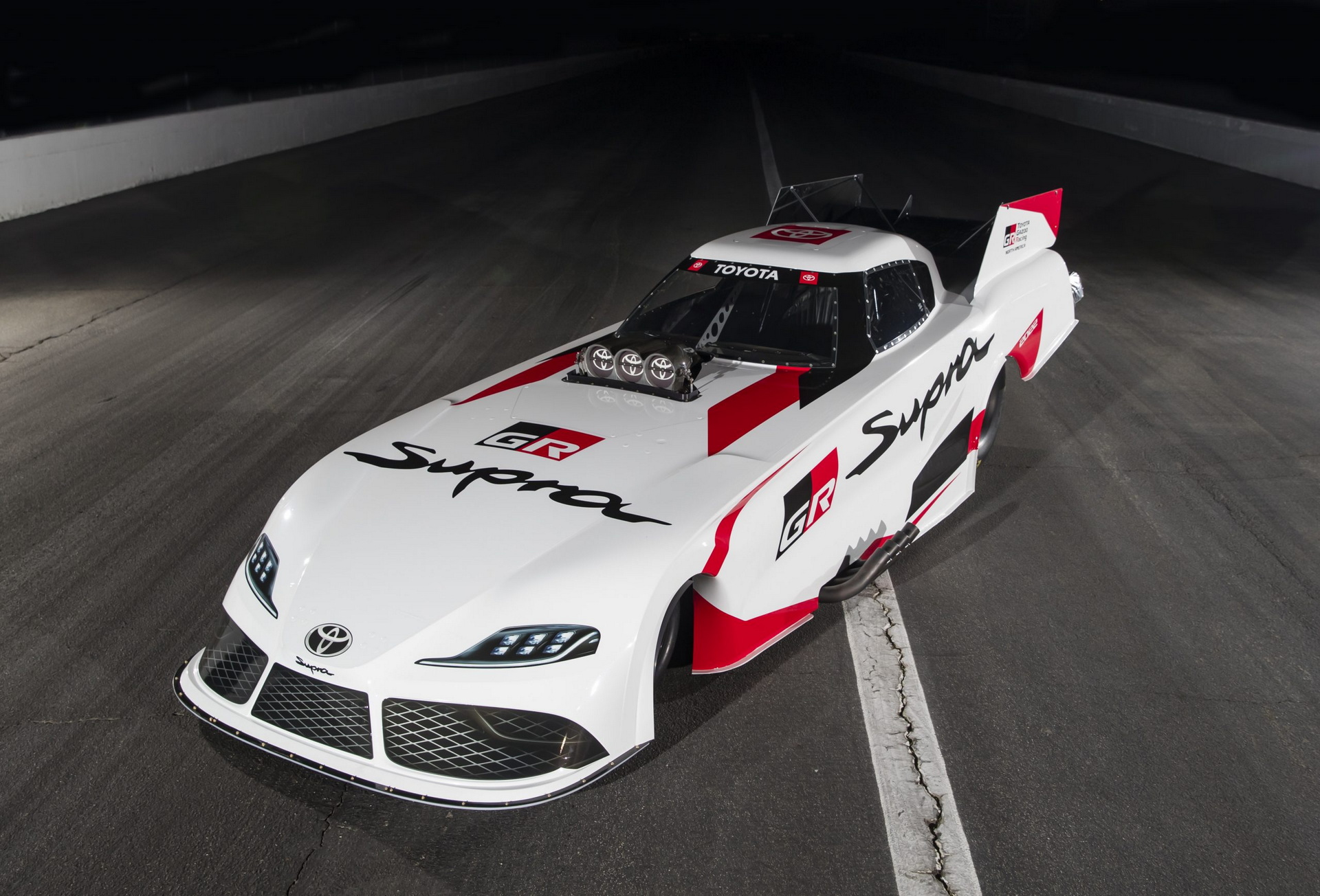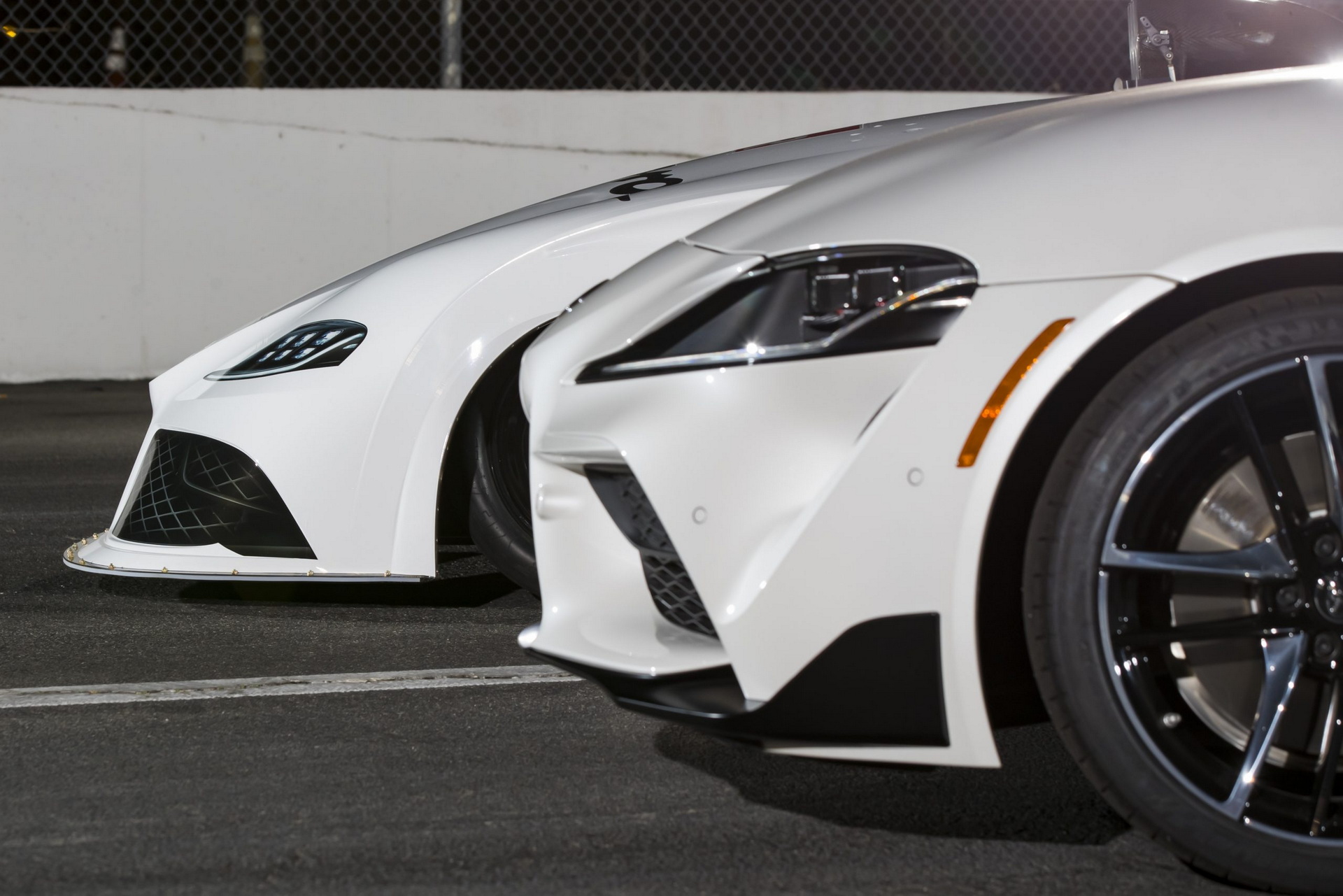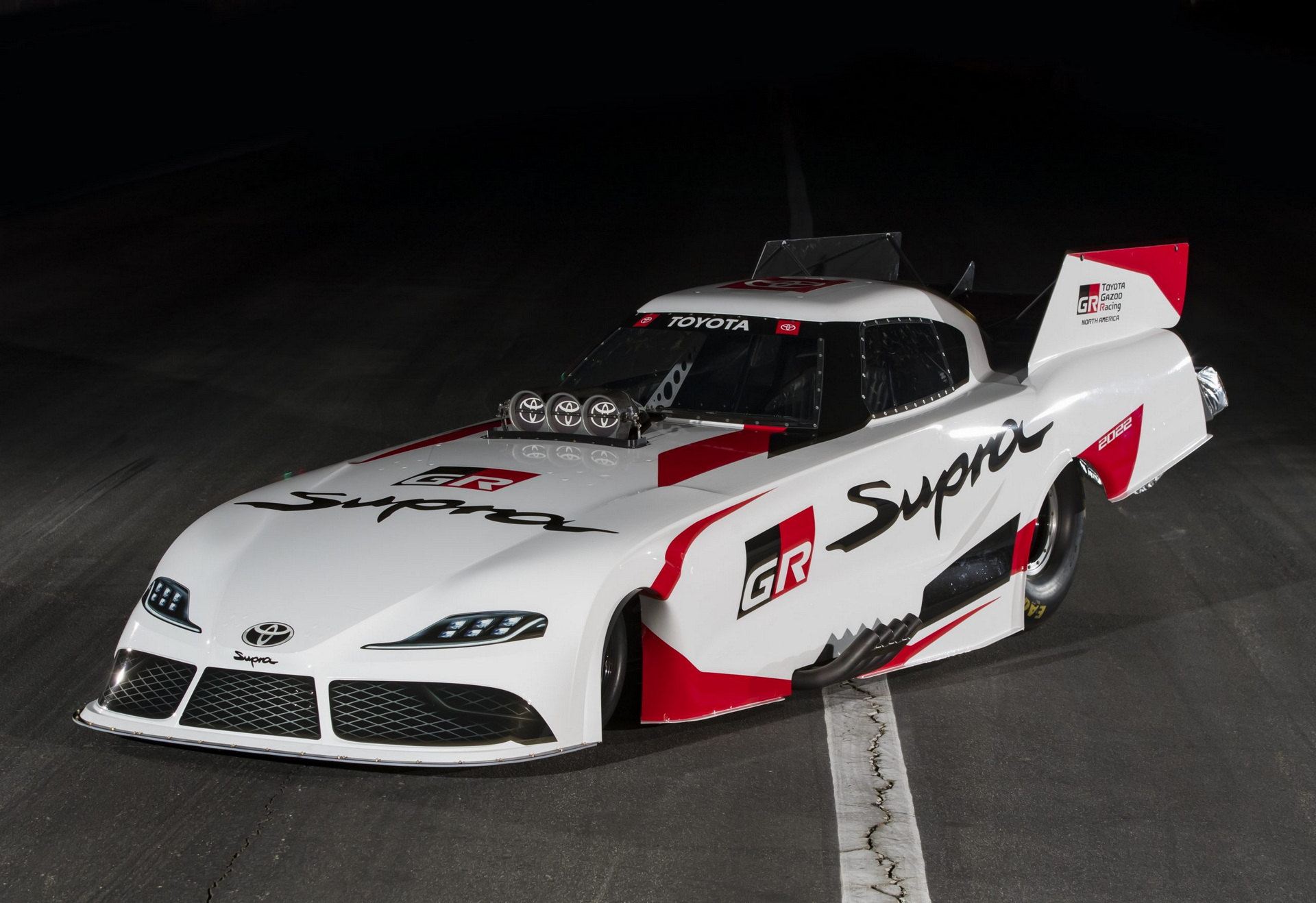Toyota today unveiled the car it will campaign in the 2022 NHRA Funny Car racing season. With a new body inspired by the GR Supra, the 2022 car, will race for the first time at the new season’s kickoff event in Pomona, California in February.
“After 10 years of fielding the Camry in NHRA Funny Car competition, it’s really exciting for us to be moving to the GR Supra and ultimately the next generation of Funny Cars for NHRA,” said Paul Doleshal, group manager of motorsports for Toyota Motor North America. “Our team at TRD (Toyota Racing Development) along with the design team at Calty worked hard to incorporate as many features from the production GR Supra into the Funny Car that J.R. Todd and Alexis DeJoria will drive in 2022.”
The Supra replaces the Camry Funny Car, with which it has been competing since 2012. Before that, the brand competed with a Celica and a Solara. Although the 2022 car only incorporates exterior visual cues from the Supra, Toyota calls it the car with the most significant styling characteristics of any previous Funny Car.
Read Also: BMW Offers Us A Glimpse Of Its 2023 LMDh Prototype
Toyota also introduced new safety enhancements with the new car. The driver can now see more from behind the wheel, has more room for their helmet, and there’s more safety foam throughout the cockpit. The company says its racing department worked closely with its champion Funny Car driver, J.R. Todd, on many of the improvements.
“It’s been a really unique experience getting to work with the engineers at TRD on the new GR Supra Funny Car,” said Kalitta Motorsports Funny Car driver J.R. Todd. “To be a part of the work to try to make these cars as safe as possible for us as drivers means a lot to me.”
2021 marks Toyota’s 20th anniversary in NHRA competition. In all, its drivers have won 137 Top Fuel and 43 Funny Car races, and have earned six Top Fuel and three Funny Car championships.
Funny Car regulations are tightly controlled and vehicles are only allowed to run V8 engines with a displacement of no more than 500 ci (8.2 liters). Estimates suggest that they make around 8,000 hp (8,111 PS/5,965 kW) and 7,000 lb-ft (9,500 Nm) of torque.





